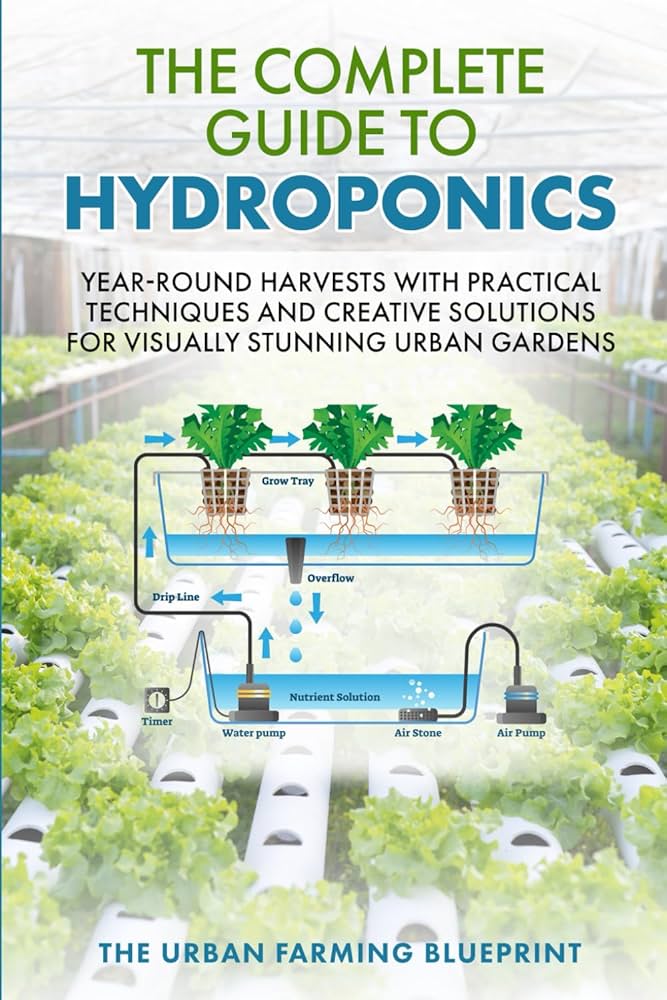Introduction
Hydroponic gardening is revolutionizing the way we grow plants by eliminating soil and using nutrient-rich water solutions instead. This innovative method allows gardeners to cultivate fresh produce year-round, often with higher yields and reduced resource use. Whether you have limited space, want to avoid soil-borne pests, or seek faster plant growth, a hydroponic garden offers a sustainable and efficient alternative.
In this comprehensive guide, we’ll explore what hydroponic gardening is, its benefits, how to set up your own system, and expert tips to maximize success. By understanding the science and practical steps behind hydroponics, you’ll gain the confidence to grow healthy plants with precision and ease.
What Is a Hydroponic Garden?
Understanding Hydroponics
A hydroponic garden grows plants without soil, using water-based nutrient solutions to deliver essential minerals directly to the roots. Plants are supported by inert mediums like coconut coir, perlite, or rockwool, which provide stability but no nutrients.
Key Components
- Nutrient solution: A balanced mix of macro and micronutrients dissolved in water.
- Growing medium: Materials that anchor roots but do not supply nutrients.
- Light source: Natural sunlight or grow lights to support photosynthesis.
- Oxygen supply: Aeration systems or flowing water to oxygenate roots.
Hydroponics leverages scientific precision to optimize plant growth, making it popular among commercial growers and home gardeners alike.
Benefits of Hydroponic Gardening
Faster Growth and Higher Yields
Plants in hydroponic systems often grow 20-25% faster than those in soil because nutrients are delivered directly and efficiently. This can lead to multiple harvests per year, increasing productivity.
Water Efficiency
Hydroponic gardens use up to 90% less water compared to traditional soil gardening. The closed-loop systems recycle water, minimizing waste and conserving resources.
Space Saving and Versatility
Hydroponics allows vertical and indoor gardening, making it ideal for urban environments or areas with poor soil quality. You can grow a wide variety of crops, from leafy greens to tomatoes, in compact spaces.
Reduced Pests and Diseases
Without soil, many common pests and diseases are less prevalent, reducing the need for pesticides and making the garden safer.
How to Set Up Your Hydroponic Garden
Choosing the Right System
There are several hydroponic system types, each suited for different plants and scales:
- Nutrient Film Technique (NFT): Thin film of nutrient solution flows over roots.
- Deep Water Culture (DWC): Roots suspended in oxygenated nutrient solution.
- Ebb and Flow: Periodic flooding and draining of the root zone.
- Drip System: Nutrient solution drips onto the base of each plant.
Select a system based on your space, budget, and plant types.
Essential Equipment
- Reservoir to hold nutrient solution
- Water pump and air pump for circulation and oxygenation
- Grow trays or containers
- Growing medium like rockwool or clay pellets
- pH and EC meters to monitor nutrient levels
- Lighting if growing indoors
Step-by-Step Setup
- Assemble the hydroponic system components.
- Prepare the nutrient solution according to plant requirements.
- Set up grow lights or place your garden where it receives adequate sunlight.
- Plant seedlings in the growing medium.
- Monitor pH (5.5-6.5) and electrical conductivity (EC) regularly.
- Adjust nutrient concentration and water levels as plants grow.
Tips for Successful Hydroponic Gardening
- Monitor Environment: Maintain ideal temperature (65-75°F) and humidity for your plants.
- Regularly Check pH and Nutrients: Keeping these balanced prevents nutrient deficiencies.
- Use Quality Seeds or Clones: Healthy starts improve overall yield.
- Prevent Disease: Keep water clean and sanitize equipment to avoid root rot.
- Rotate Crops: Even in hydroponics, rotating plants helps maintain nutrient balance and prevents pest buildup.
Real-World Examples and Expert Insights
Research from the University of Arizona shows hydroponic lettuce can grow up to 30% faster with less water than soil-grown counterparts. Expert gardener Lisa Mason notes, “Hydroponics allows precise control over nutrition, resulting in healthier plants and better flavors.” Commercial growers increasingly adopt hydroponic methods to meet food demand sustainably.
Conclusion
Hydroponic gardening presents an innovative and efficient way to grow plants without soil. By delivering nutrients directly through water, it offers faster growth, higher yields, and water savings. With various system options and proper management, anyone can successfully cultivate a thriving hydroponic garden.
Whether you’re an urban dweller with limited space or a seasoned gardener seeking sustainable methods, hydroponics provides a versatile solution. Start small, monitor your system closely, and enjoy fresh, nutrient-rich produce year-round. Embrace hydroponics today to transform your gardening experience and contribute to sustainable food production.
